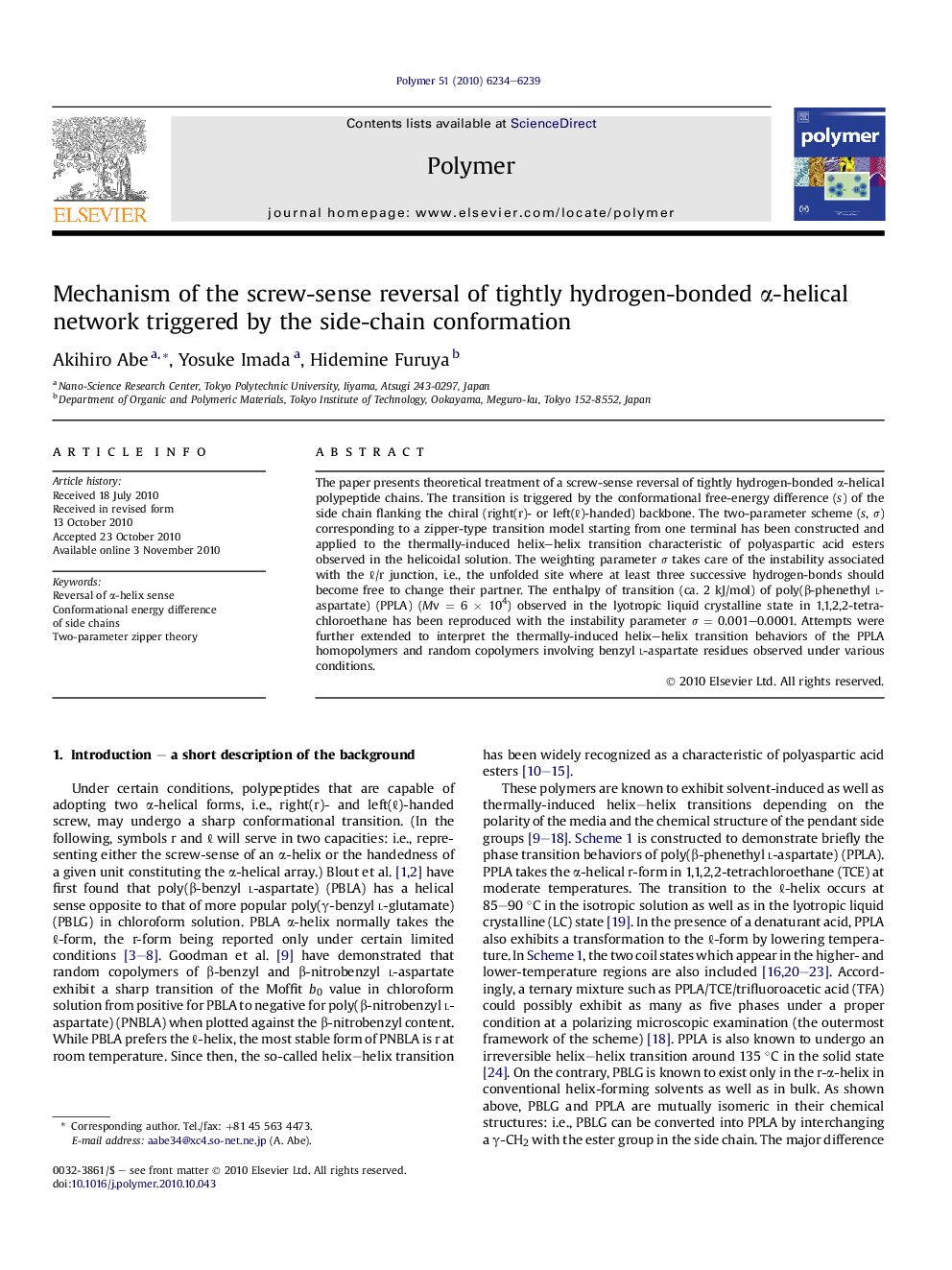| Article ID | Journal | Published Year | Pages | File Type |
|---|---|---|---|---|
| 5183399 | Polymer | 2010 | 6 Pages |
The paper presents theoretical treatment of a screw-sense reversal of tightly hydrogen-bonded α-helical polypeptide chains. The transition is triggered by the conformational free-energy difference (s) of the side chain flanking the chiral (right(r)- or left(â)-handed) backbone. The two-parameter scheme (s, Ï) corresponding to a zipper-type transition model starting from one terminal has been constructed and applied to the thermally-induced helix-helix transition characteristic of polyaspartic acid esters observed in the helicoidal solution. The weighting parameter Ï takes care of the instability associated with the â/r junction, i.e., the unfolded site where at least three successive hydrogen-bonds should become free to change their partner. The enthalpy of transition (ca. 2 kJ/mol) of poly(β-phenethyl l-aspartate) (PPLA) (Mv = 6 Ã 104) observed in the lyotropic liquid crystalline state in 1,1,2,2-tetrachloroethane has been reproduced with the instability parameter Ï = 0.001-0.0001. Attempts were further extended to interpret the thermally-induced helix-helix transition behaviors of the PPLA homopolymers and random copolymers involving benzyl l-aspartate residues observed under various conditions.
Graphical abstractDownload full-size image
